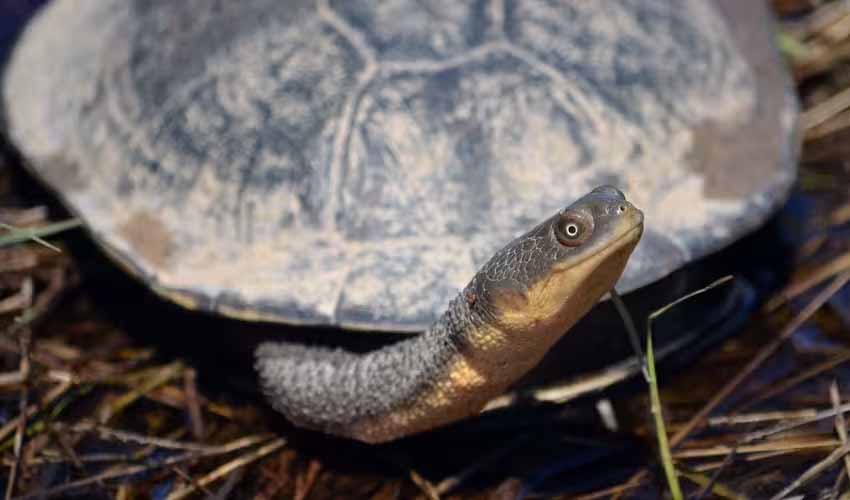Chelidae – South American side-neck turtles
We fold our necks sideways, rather than pulling them straight back
Comprises a distinctive group of turtles with a geographic distribution spanning South America, sub-Saharan Africa, Indonesia, Australia, and New Guinea. These turtles are noted for their long lifespans, and compared to other turtle families, they are on the larger side, with some species reaching significant sizes.
A striking feature of the Chelidae is their long and flexible necks, which are as long as the shell itself in some species. This serpentine neck, which cannot be fully retracted into the shell, has given rise to the nickname “snake-necked turtle.” Instead of retracting their necks, they bend them sideways beneath their shell when feeling threatened.
Chelidae turtles’ skin color ranges from olive to brown, often accompanied by black markings on the top of their heads, which may serve as camouflage or for species identification. The shell, or carapace, is typically dark brown, robust, and streamlined for efficient swimming. Their plastron, the bottom part of the shell, is usually lighter and can sometimes show complex patterns.
Their eyes are large and round, providing them with good vision, essential for spotting prey in murky waters. The shape of their mouth gives the appearance of a permanent grin, adding to their distinctive visage. This feature, however, is not just for looks; it plays a crucial role in their feeding habits.
Chelidae turtles are primarily found in freshwater environments such as rivers, lakes, and ponds. They prefer waters that maintain a consistent level throughout the year, ensuring a stable habitat. These turtles are adept swimmers and will often spend most of their time in the water, although they do occasionally come out to bask in the sun.
Genera in this family
You might mistake these turtles for snakes!
In several species, the blunt head and wide jaw give them an almost “toad-faced” look
Second species in this genus only described in 2020
People love their punk-rock look and gentle nature
Generally calm and not aggressive, but they can be quite shy






